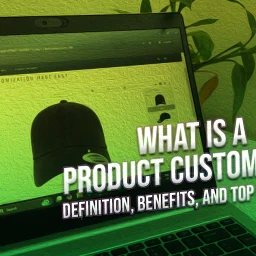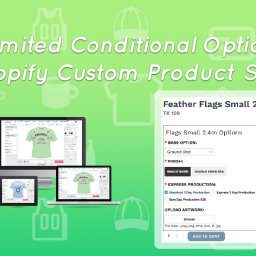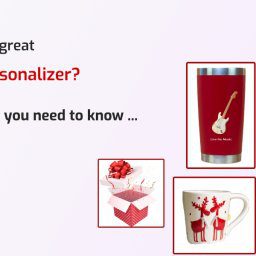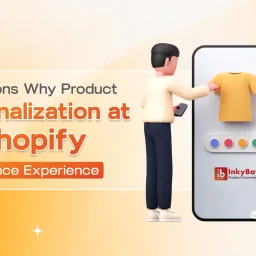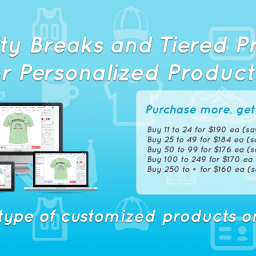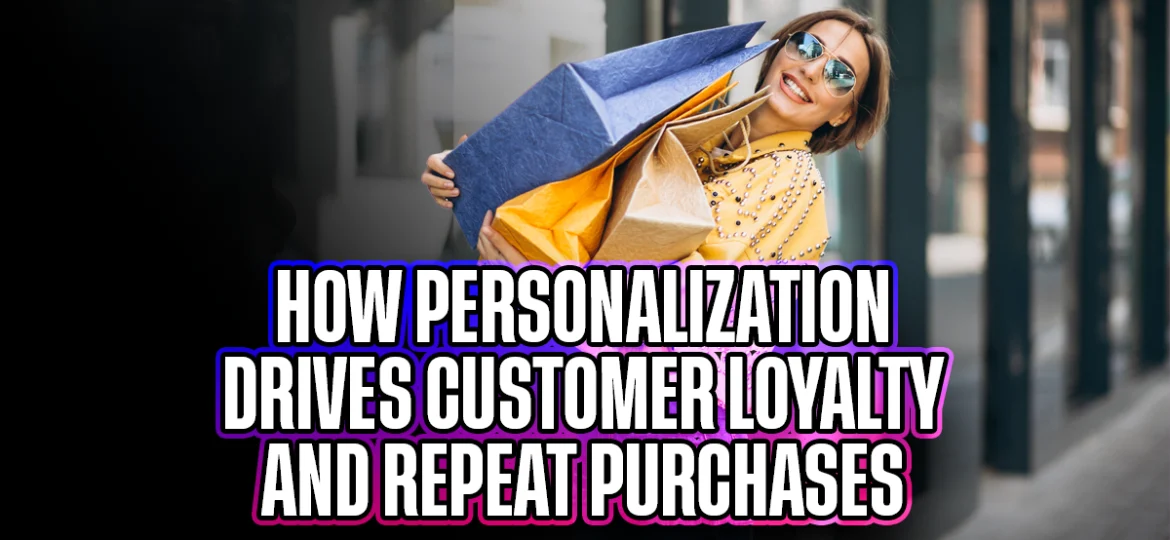
Last Updated on February 10, 2025
In today’s competitive eCommerce world, getting customers is just the beginning. The real growth comes from retaining them as repeat customers. Loyal customers spend 67% more than new ones, and according to Annex Cloud just a 5% increase in customer retention can boost profits by 75%.
What’s the secret to turning one-time buyers into repeat customers? It’s personalization. By offering shopping experiences that serve the interest of individual preferences, businesses can build stronger emotional connections, improve customer satisfaction, and encourage repeat customer purchases. For Shopify store owners, tools like InkyBay make it easy to offer personalised products that customers love, setting the stage for long-term loyalty and higher revenue.
In this blog, we’ll explore how personalization increases repeat purchases and how you can use it to grow your eCommerce business.
Why Repeat Purchases Matter for eCommerce Success
In an industry focused on convenience and personalization, repeat purchases are important for sustainable growth. Building a loyal customer base not only boosts revenue but also enhances brand reputation, helping businesses succeed in competitive markets. Let’s explore why repeat purchases are so important and how strategies like personalization and tools like a custom product builder can build customer loyalty.
1. Repeat Customers Contribute More to Revenue
Studies show that repeat customers are the most valuable to any eCommerce business. As we already discussed, loyal customers spend 67% more than first-time buyers and are more likely to purchase premium or add-on products on future visits. This increased revenue comes from the trust and familiarity they have with your brand. For example, when customers return to a store with a custom product builder, they are often willing to try new options, resulting in higher order values.
2. Lower Customer Acquisition Costs (CAC)
As Times of India reports, acquiring new customers can be 5-10 times more expensive than retaining existing ones, since the costs of advertising, promotions, and discounts often reduce profit margins. In contrast, repeat customers require less convincing to make purchases, respond better to marketing campaigns like personalised emails and loyalty programs, and significantly boost profitability. By focusing on repeat purchases, you can lower the customer acquisition costs (CAC) and increase customer lifetime value (CLV).
3. Building a Group of Organic Brand Promoters
Happy, repeat customers often become a brand promoter, which is incredibly valuable for eCommerce stores. Loyal customers:
- Tell their friends and family about your store.
- Leave positive reviews.
- Share their experiences on social media.
For example, a Shopify store with a custom product builder can gain a lot from customers sharing photos of their personalised items. This kind of word-of-mouth promotion attracts new buyers and strengthens your store’s reputation as a trusted brand.
4. Enhancing Customer Loyalty
Customer loyalty is the key factor behind repeat purchases, as loyal customers are less likely to shop around, even if competitors offer similar products at lower prices. Personalization plays a crucial role in this process. Tailored recommendations and customizations create emotional connections, making shoppers feel valued when their unique preferences are met. Although there are many ways to build customer loyalty but knowing these 26 Effective Ways To Build Customer Loyalty is paramount to get a result driven success.
For example, tools like InkyBay’s custom product builder enable Shopify stores to let customers design products to their exact specifications. This sense of control and ownership fosters loyalty and encourages future purchases.
5. Predictable Revenue Streams
Having a group of repeat customers creates consistency in your revenue. Instead of relying on unpredictable new customer acquisitions, repeat buyers provide stability. They make purchasing patterns more predictable. They reduce reliance on seasonal sales or discounts. This predictability allows businesses to plan inventory, operations, and marketing budgets more effectively, resulting in better cash flow management.
6. Opportunities for Upselling and Cross-Selling
Repeat customers are more open to upselling and cross-selling because they trust your brand. This makes it easier to present related or premium products to them.
For example:
- A customer who buys a personalised hoodie might come back to purchase matching accessories or explore new product categories.
- Businesses can use a custom product builder to suggest upgrades like better materials or exclusive design options, boosting revenue further.
7. Emotional Connection and Long-Term Loyalty
When customers feel a strong emotional connection to a brand, they are 306% more likely to make repeat purchases, according to research by Motista. Personalization plays a crucial role in building these connections.
By offering customizable options, businesses show they care about individual preferences. This builds loyalty over time, which can withstand occasional product issues or price changes.
The Psychology of Personalization
Personalization now is more than just a trend in eCommerce; it’s a powerful strategy based on understanding human behavior. It taps into the basic human need to feel watched, valued, and understood, making personalised shopping experiences an expectation rather than a luxury.
When done right, personalization not only increases customer engagement but also builds trust, loyalty, and drives long-term business success. Let’s explore why personalization is so effective and why it matters.
The Human Desire for Recognition
People naturally want to feel recognized and appreciated. Personalization addresses this need by:
- Acknowledging Individuality: Using customers’ names or recommending products based on their past behaviors makes them feel valued.
- Creating Emotional Connections: Shoppers form stronger bonds with brands that cater to their unique preferences.
For example, when an eCommerce store offers personalised shopping experiences, like exclusive product recommendations or custom design options, customers are more likely to feel that the brand cares about them and pays attention to their needs.
Cognitive Ease and Decision-Making
Our brains naturally try to save energy, and personalization helps by making it easier to decide what to buy. By offering narrow and targeted options, it reduces the supposed fatigue caused by too many options (known as “decision fatigue”), and helps customers quickly find what they need.
For example, suggesting products based on browsing history makes shopping simpler and more satisfying, leading to higher engagement and fewer customers leaving the site without buying.
The Power of Emotional Triggers
Personalization creates strong emotional connections, making shopping more enjoyable and memorable. Here’s how it works:
- Ownership Feeling: When customers personalize products, they feel like they own them even before buying. This makes them more likely to complete the purchase.
- Identity Reflection: People love products that reflect their personality or values. Offering customization allows them to choose items that match their identity.
For example, giving customers the option to design their own products with a custom product builder makes them more emotionally invested and increases the chance of repeat purchases.
Trust and Reciprocity
When a brand personalizes its interactions, customers see it as a sign of care, which builds trust. This trust leads to the principle of reciprocity, where customers feel like they should return the favor. They might buy more or recommend the brand to others.
Trusting customers also tends to stay loyal and not look at competitors. Brands that consistently offer personalised shopping experiences show they listen to and meet their customers’ needs, strengthening this bond even more.
Dopamine and the “Wow” Factor
Personalization releases dopamine, the chemical linked to pleasure and reward. When customers receive a tailored shopping experience, they feel excited from discovering relevant products and satisfaction from knowing the brand understands them.
For instance, a shopper who gets a birthday discount or a personalised product recommendation feels a “wow” moment, creating a positive connection with the brand and boosting customer engagement.
Winning Confidence by Addressing Concerns
While personalization can be a great tool, it can sometimes make people uncomfortable if it feels too intrusive or off-target. To prevent this, brands should:
- Keep It Relevant: Only personalize based on important information, like what customers have bought before or their preferences.
- Be Open About It: Clearly explain how you use customer data to make their shopping experience better.
When personalization is done right, it feels like a helpful feature, not an invasion of privacy, helping to build trust and confidence in the brand.
7. Making Products Feel More Valuable
Personalization makes products or services feel special to customers. They’re often willing to pay more for items that are unique or tailored to their needs.
For example:
- Offering custom designs or special product bundles.
- Recommending upgrades or additional products based on what they’ve bought before.
This makes customers feel valued and respected, which boosts sales and keeps them engaged with your brand.
The Role of Technology in Personalization
Technology has made personalization much easier and more accurate. Instead of spending a lot of time and resources on manual personalization, businesses can now use advanced tools and platforms to create customized experiences for their customers. These tools help collect and analyze customer data, automatically recommend products, deliver targeted ads and emails, offer customizable products, and adapt the shopping experience in real-time. This means that customers get tailored experiences that meet their individual needs at every stage, which boosts their satisfaction and loyalty.
A. Understanding Customers with Data
Personalization relies heavily on data to understand customer behavior, preferences, and needs. Technology helps businesses collect, process, and analyze large amounts of data in real time.Here’s how it works:
- Tracking Behavior: Tools like Google Analytics, Hotjar, Microsoft Clarity track how customers navigate your site, how long they stay, and what they click on.
- Purchasing History: CRM systems record past purchases to help predict what customers might want in the future.
- Demographic Insights: AI platforms analyze data on age, location, and interests to group similar customers together.
By using this data, businesses can create personalised shopping experiences, offering product recommendations and targeted marketing messages that are highly relevant to each customer.
B. Enhancing Personalization with AI and Machine Learning
AI and machine learning play a significant role in getting real-time, personalised experiences for customers. These technologies help predict what customers might like or need next by analyzing patterns in their behavior. For example, AI algorithms can look at what products a customer has viewed or purchased in the past and use this data to make informed guesses about future preferences.
Moreover, platforms like Netflix and Amazon are well-known for using machine learning to offer personalised recommendations. This means that each time a user logs in, they see content or products that are specifically chosen based on their unique tastes and previous interactions. This level of personalization helps keep customers engaged and coming back for more.
AI also has the capability to adapt the shopping experience on the go. For instance, it can change website content, layout, or special offers in real time, based on what the user does. This ensures a seamless and relevant journey for each visitor. In the context of an eCommerce store offering custom products, AI can suggest design options or features based on the customer’s browsing history, enhancing engagement and satisfaction by making the shopping process more intuitive and enjoyable.
How to Increase Repeat Purchases in Your Store
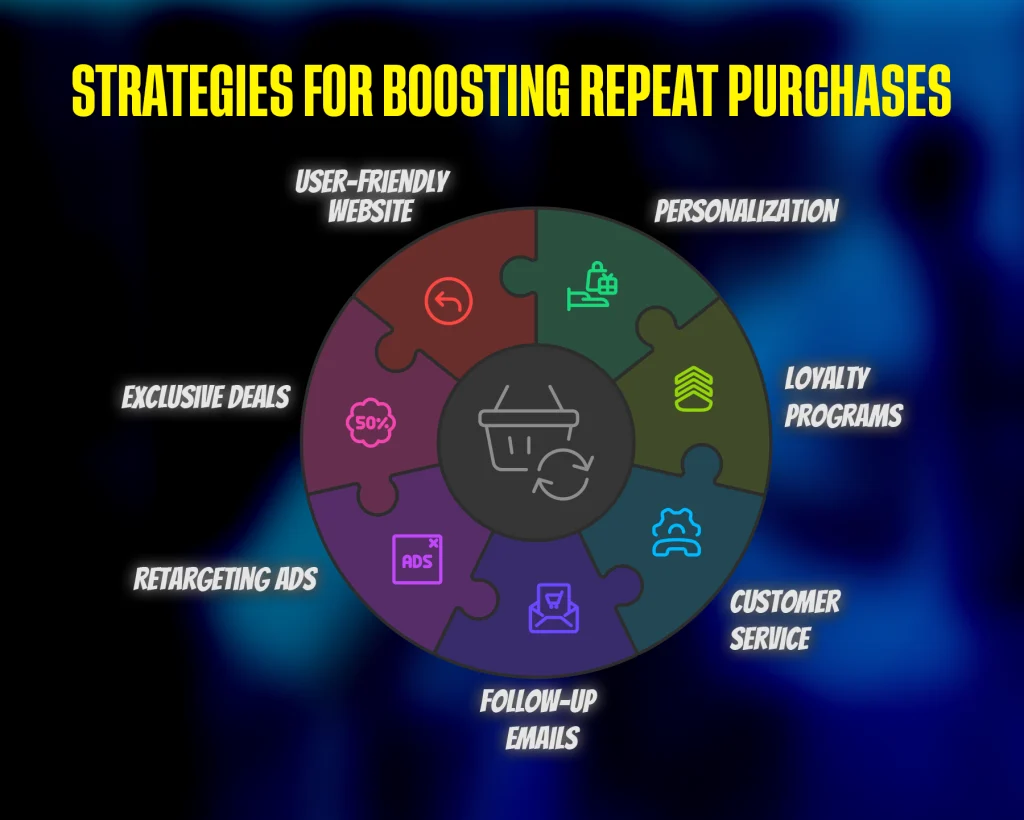
Encouraging repeat purchases is crucial for long-term success in eCommerce. Loyal customers not only provide steady income but also promote your brand to others, attracting new shoppers naturally. To increase repeat purchases, focus on what customers need and use technology smartly.
Here are seven simple ways to encourage them:
1. Personalize Their Shopping Experience with Recommendations Based on Past Purchases
Personalization is key to making customers feel special and understood. By using data from their past purchases, you can recommend products that align with their tastes and preferences. For example, if a customer frequently buys fitness gear, suggest new workout clothes or equipment. This approach not only increases the chances of a sale but also enhances the shopping experience by making it relevant and tailored to their interests.
2. Offer Loyalty Programs That Reward Them for Coming Back
Loyalty programs are a great way to encourage repeat purchases. Offer points for every purchase, which can be redeemed for discounts or free products. You can also provide exclusive rewards, such as early access to sales or special events, to make customers feel valued. A well-designed loyalty program creates a win-win situation: customers get more value, and your business experience increased customer retention.
3. Arrange Excellent Customer Service to Build Trust and Satisfaction
Great customer service builds trust and loyalty. Ensure your team is responsive and helpful. InkyBay is known for its exceptional customer service, where the technical experience engineers go above and beyond to resolve issues faced by any business, creating a positive shopping experience that keeps customers coming back.
4. Send personalised Follow-Up Emails and Reminders
After a purchase, follow up with personalised emails. For example, thank customers for their purchase and suggest related products. If someone buys running shoes, send an email recommending running socks or a fitness tracker. These personalised touches keep your brand top of mind and encourage additional purchases.
5. Use Ads to Bring Them Back to Your Site
Retargeting ads remind customers of your brand and products. For instance, if someone browses your site but doesn’t buy, show them ads featuring the products they viewed. Facebook and Google Ads are effective platforms for retargeting, increasing the possibilities that customers would return to complete their purchase.
6. Give Exclusive Deals and Discounts for Returning Customers
Offering special deals to returning customers shows you value their loyalty. For example, send exclusive discount codes or limited-time offers. Starbucks’ rewards program offers personalised discounts and free items, encouraging repeat visits and purchases.
7. Make Sure Your Website is Easy to Use and Enjoyable to Shop On
A seamless and enjoyable shopping experience is very important for customer retention. Ensure that your website is user-friendly, with intuitive navigation, fast loading times, and a clean, attractive design. Optimize your site for mobile devices, as many customers shop on their phones.
Come up with clear product descriptions, high-quality images, and easy-to-use search and filtering options. By making the shopping experience pleasant and hassle-free, you increase the chances of customers returning to your store.
Conclusion
Personalization is very important for building long-term customer relationships in eCommerce. By addressing individual preferences, businesses can create unique shopping experiences that go beyond transactions, turning customers into organic brand ambassadors. Tools like InkyBay’s product customizer simplify personalization, helping Shopify store owners offer products that truly resonate with their audience. Implementing strategies such as loyalty programs, personalised recommendations, excellent customer service, and a seamless user experience can transform one-time buyers into loyal, repeat customers.




